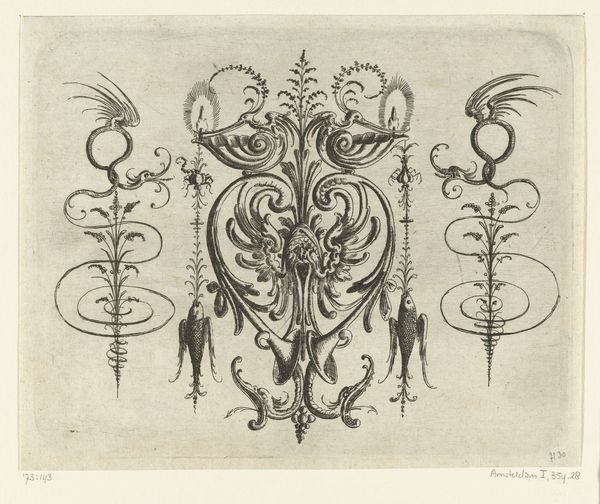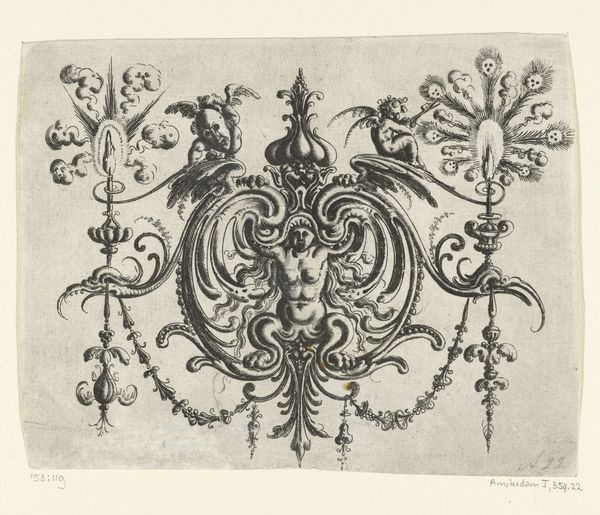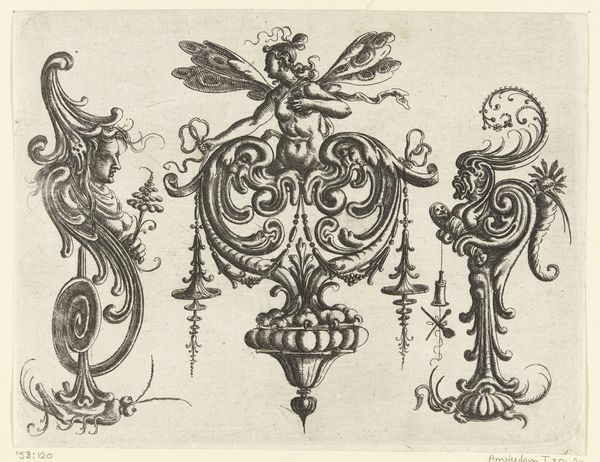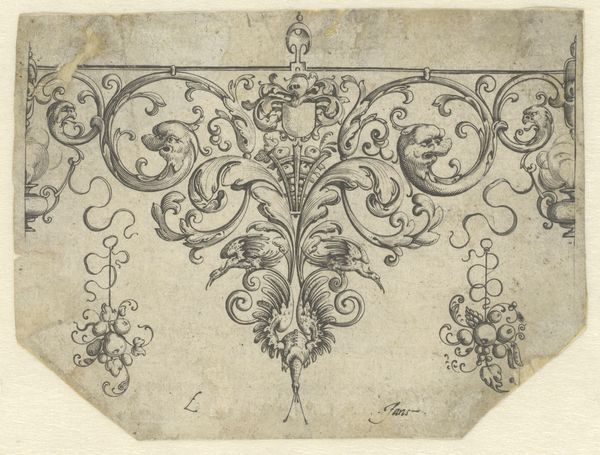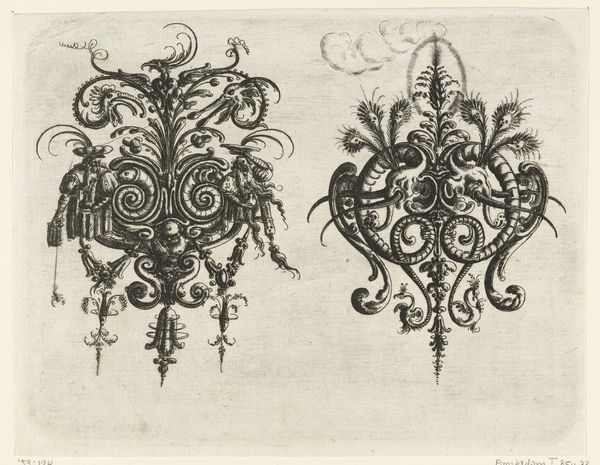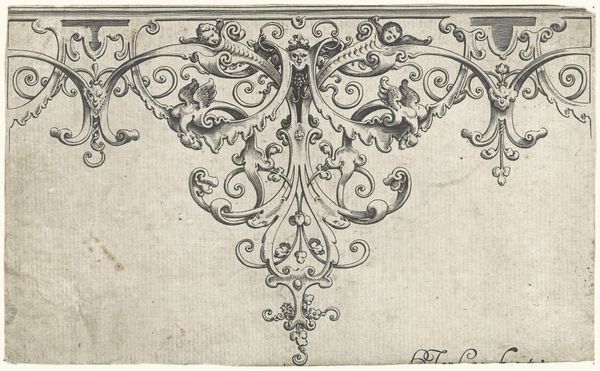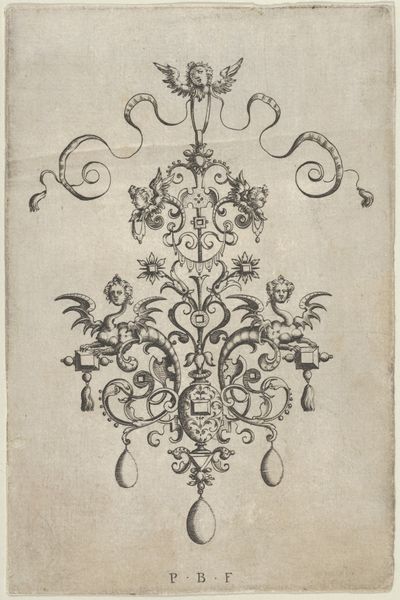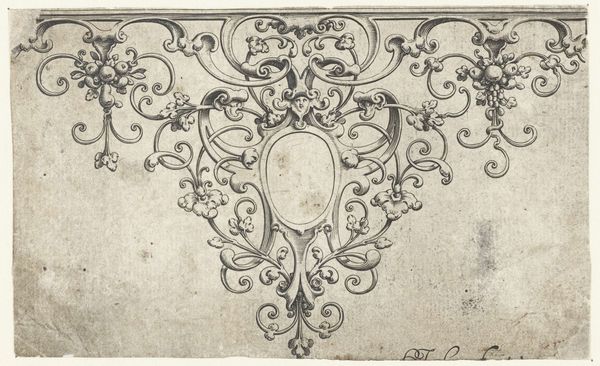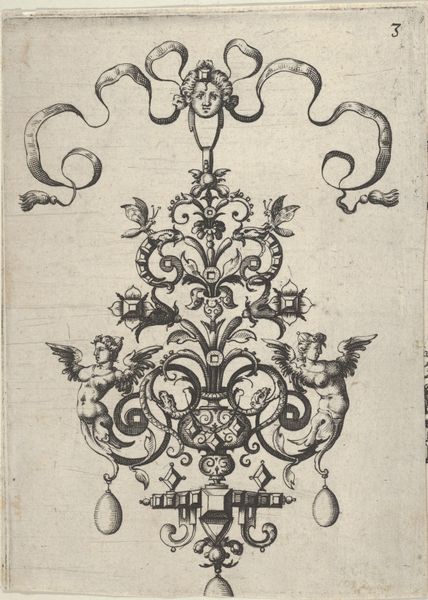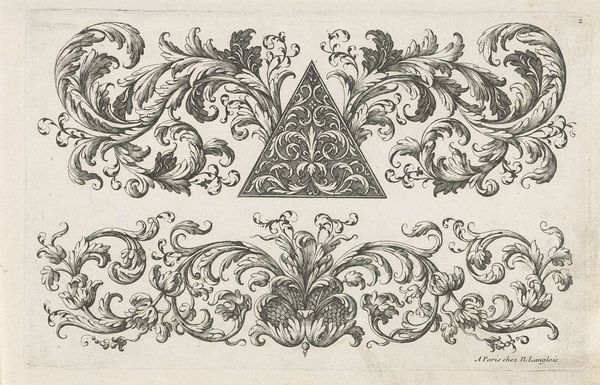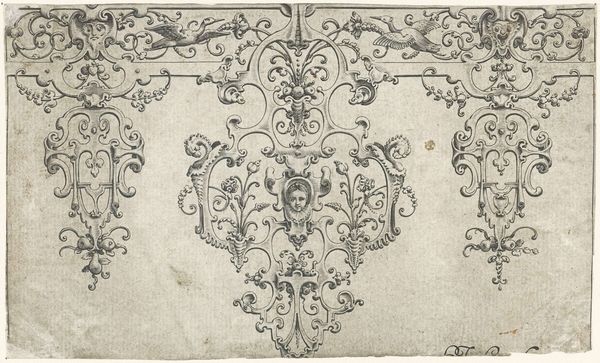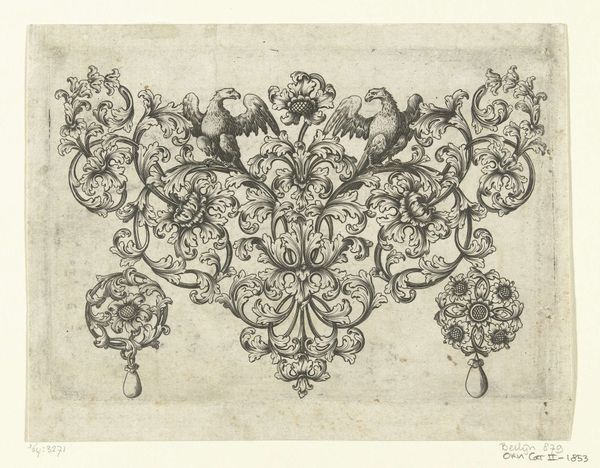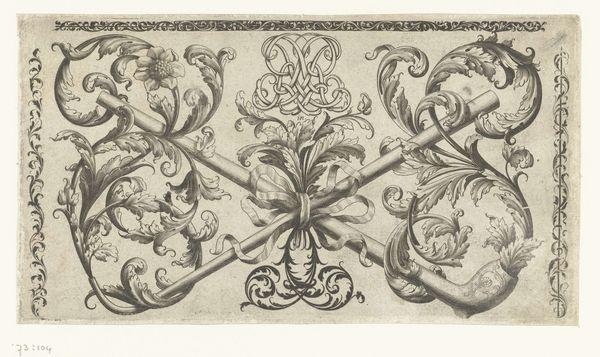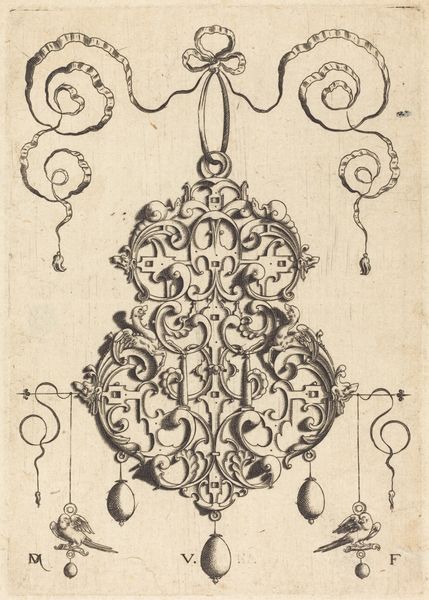
Mascaron met vleugels waarvan sommige pennen uitlopen in vissenkoppen 1573 - 1610
0:00
0:00
drawing, ink, engraving
#
drawing
#
pen drawing
#
mannerism
#
form
#
ink
#
line
#
engraving
Dimensions: height 142 mm, width 175 mm
Copyright: Rijks Museum: Open Domain
This engraving, a "Mascaron met vleugels waarvan sommige pennen uitlopen in vissenkoppen," was created by Christoph Jamnitzer in the late 16th or early 17th century. It presents a grotesque mask with wings that end in fish heads, motifs deeply rooted in the Renaissance fascination with classical antiquity and the grotesque. The grotesque, derived from the Italian "grottesco," refers to a style of decorative art characterized by fantastical, hybrid forms. Here, the winged mask combines human, animal, and ornamental elements, reflecting a broader cultural interest in transformation and the blurring of boundaries between the natural and artificial. Consider how such imagery reappears in ancient Roman frescoes, and the elaborate ornamentation found in medieval illuminated manuscripts. The fish-tailed wings are a particularly intriguing motif, evoking the ancient association of fish with fertility, abundance, and the subconscious. The presence of these figures may represent an engagement with the irrational and the chthonic, tapping into primal fears and desires that continue to resonate across centuries. Note how the combination of these elements—the grotesque, the aquatic, and the hybrid—creates a powerful visual experience, engaging viewers on a deep, subconscious level. These symbols, ever fluid, continue their dance through time.
Comments
No comments
Be the first to comment and join the conversation on the ultimate creative platform.
